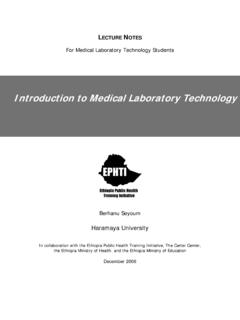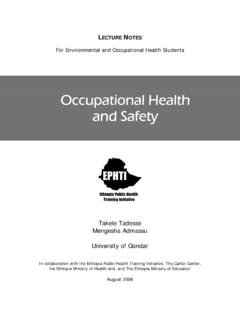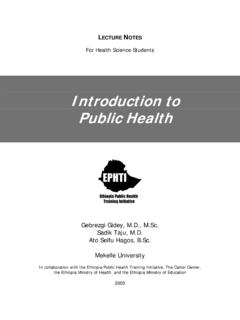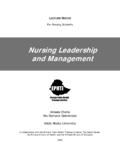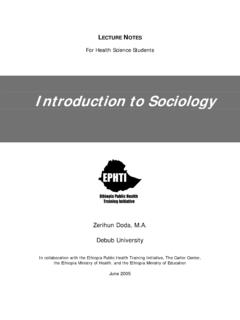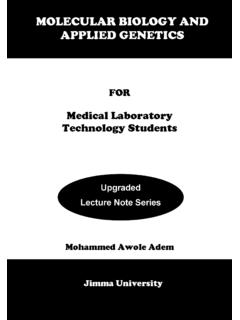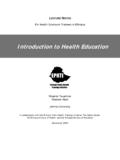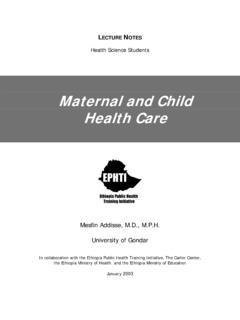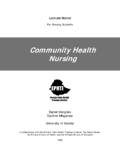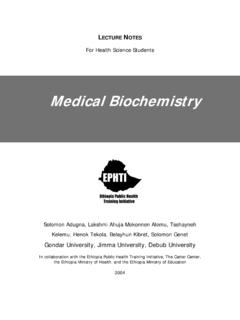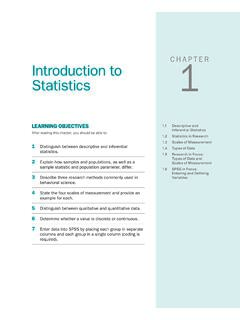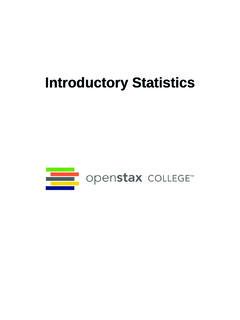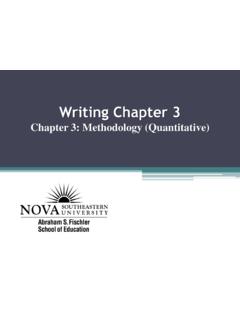Transcription of For Health Science Students - Carter Center
1 LECTURE NOTES For Health Science Students Biostatistics Getu Degu Fasil Tessema University of Gondar In collaboration with the Ethiopia Public Health Training Initiative, The Carter Center , the Ethiopia Ministry of Health , and the Ethiopia Ministry of Education January 2005 Funded under USAID Cooperative Agreement No. 663-A-00-00-0358-00. Produced in collaboration with the Ethiopia Public Health Training Initiative, The Carter Center , the Ethiopia Ministry of Health , and the Ethiopia Ministry of Education. Important Guidelines for Printing and Photocopying Limited permission is granted free of charge to print or photocopy all pages of this publication for educational, not-for-profit use by Health care workers, Students or faculty.
2 All copies must retain all author credits and copyright notices included in the original document. Under no circumstances is it permissible to sell or distribute on a commercial basis, or to claim authorship of, copies of material reproduced from this publication. 2005 by Getu Degu and Fasil Tessema All rights reserved. Except as expressly provided above, no part of this publication may be reproduced or transmitted in any form or by any means, electronic or mechanical, including photocopying, recording, or by any information storage and retrieval system, without written permission of the author or authors. This material is intended for educational use only by practicing Health care workers or Students and faculty in a Health care field.
3 Biostatistics iPREFACE This lecture note is primarily for Health officer and Medical Students who need to understand the principles of data collection, presentation, analysis and interpretation. It is also valuable to diploma Students of environmental Health , nursing and laboratory technology although some of the topics covered are beyond their requirements. The material could also be of paramount importance for an individual who is interested in medical or public Health research. It has been a usual practice for a Health Science student in Ethiopia to spend much of his/her time in search of reference materials on Biostatistics.
4 Unfortunately, there are no textbooks which could appropriately fulfill the requirements of the Biostatistics course at the undergraduate level for Health officer and Medical Students . We firmly believe that this lecture note will fill that gap. The first three chapters cover basic concepts of statistics focusing on the collection, presentation and summarization of data. Chapter four deals with the basic demographic methods and Health service statistics giving greater emphasis to indices relating to the hospital. In chapters five and six elementary probability and sampling methods are presented with practical examples. A relatively comprehensive description of statistical inference on means and proportions is given in chapters seven and eight.
5 The last chapter of this lecture note is about linear correlation and regression. Biostatistics iiGeneral learning objectives followed by introductory sections which are specific to each chapter are placed at the beginning of each chapter. The lecture note also includes many problems for the student, most of them based on real data, the majority with detailed solutions. A few reference materials are also given at the end of the lecture note for further reading. Biostatistics iii Acknowledgments We would like to thank the Gondar College of Medical Sciences and the Department of Epidemiology and Biostatistics (Jimma University) for allowing us to use the institutions resources while writing this lecture note.
6 We are highly indebted to the Carter Center with out whose uninterrupted follow up and support this material would have not been written. we wish to thank our Students whom we have instructed over the past years for their indirect contribution to the writing of this lecture note. Biostatistics ivTable of Contents Preface i Acknowledgements iii Table of contents iv Chapter One : Introduction to statistics Learning Objectives 1 Introduction 1 Rationale of studying statistics 5 Scales of measurement 7 Chapter Two.
7 Methods of Data collection, Organization and presentation Learning Objectives 12 Introduction 12 Data collection methods 13 Choosing a method of data collection 19 Types of questions 22 Steps in designing a questionnaire 27 Methods of data organization and presentation 32 Biostatistics vChapter Three.
8 Summarizing data Learning Objectives 61 Introduction 61 Measures of Central Tendency 63 Measures of Variation 74 Chapter Four : Demographic Methods and Health Services statistics Learning Objectives 95 Introduction 95 Sources of demographic data 97 Stages in demographic transition 103 Vital statistics 107
9 Measures of Fertility 109 Measures of Mortality 114 Population growth and Projection 117 Health services statistics 119 Chapter Five : Elementary Probability and probability distribution Learning Objectives 126 Introduction 126 Mutually exclusive events and the additive law 129 Biostatistics Conditional Probability and the multiplicative law 131 Random variables and probability distributions 135 Chapter Six.
10 Sampling methods Learning Objectives 150 Introduction 150 Common terms used in sampling 151 Sampling methods 153 Errors in Sampling 160 Chapter seven : Estimation Learning Objectives 163 Introduction 163 Point estimation.
